Interesting Stuff About Insects, Spiders & Other Invertebrates
Creepy Crawlies, as most insects, bugs and other invertebrate animals are unofficially titled, have always held a special fascination for me. I am not sure why but they’re just really cool.
Invertebrates come in many shapes and sizes and they include the following taxomonic groups of animals:
Echinoderms (Echinodermata) – Echinoderms have 5 part bodies covered in spines or spikes and a calcite internal skeleton. Echinoderms include starfish, sea urchins, sand dollars, sea cucumbers, and crinoids such as the sea lily.
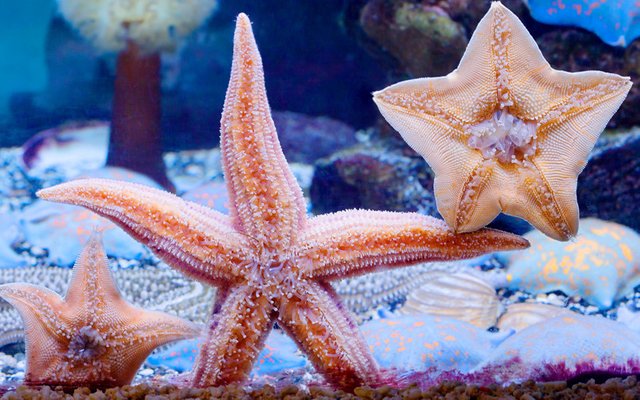
http://www.animalsworlds.com/echinoderms-invertebrates.html
Segmented Worms (Annelida) – These are worms with a segmented, cylindrical body. Leeches, earth worms, lugworms and ragworms are members of this grouping. Annelids have 2 body openings (in & out) & many have movable bristles called setae.
Molluscs (Mollusca) - These are invertebrates with a soft unsegmented body and sometimes an external (or internal) shell. This group includes gastropods like snails & slugs, bivalves (eg. clams), and cephalopods (eg. squid). Molluscs such as the slug have a musular foot whereas others, like squid, have tentacles. Cephalopods are sometimes intelligent enough to open jam jars but it is unlikely you will find any skulking about in your kitchen.
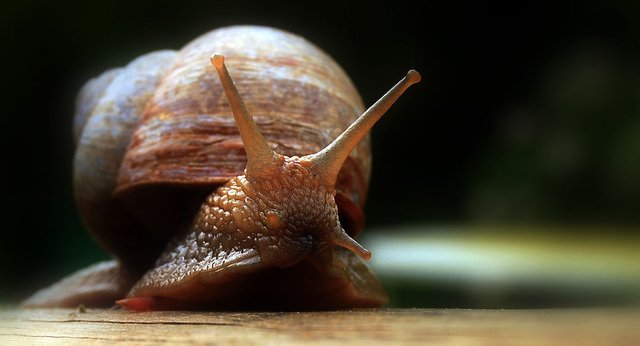
Free photo https://pixabay.com
Arthropods (Arthropoda) – These are invertebrates with jointed limbs, segmented bodies, and an ‘exoskeleton’ made of chitin. Crustaceans (eg.crabs), insects, arachnids (eg. spiders), and centipedes are all arthropods.
Sponges (Porifera) – Sponges are aquatic animals consisting of a porous skelelton of silicaceous or calciferous fibrous material. These invertebrates often form colonies attached to the sea bed. Sponges have no muscles, nerves or organs and are therefore examples of animal life at it’s most basic.
Cnidaria - This group of invertebrate animals includes jellyfish, hydras, sea anemones and corals. All of these animals are aquatic, having radially symmetrical bodies and tentacles with stinging capsules which are called nematocysts. Cnidarians have one body opening that is used for both ingesting food and eliminating waste. Imagine that! (or don’t).
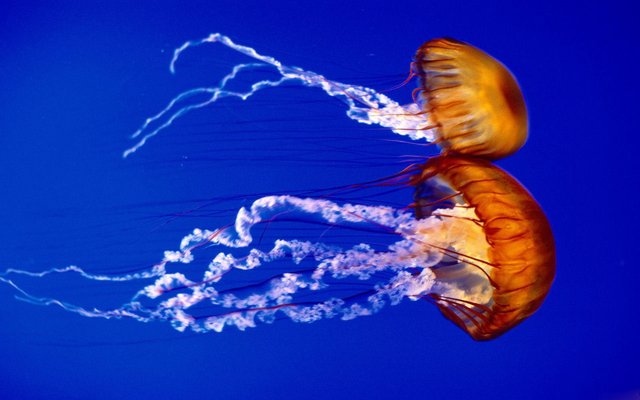
https://mulligansoup.wordpress.com/2011/03/31/kids/
Flat worms (Platyhelminthes) – This group includes cestodes (the ever popular tape worm) and numerous other parasitic and nonparasitic worms. Flatworms have no respiratory system or circulatory system and are the most primitive creatures to be adorned with a brain.
Round worms (Nematoda) - A very diverse group of invertebrates containing several parasitic and non-parasitic species. Many parasitic nematoda are pathogenic, causing disease in their host organisms. Parastic species which affect humans include hookworms, pinworms and whipworms. Most of these charming creatures are less than 2.5mm long and many are microscopic.
Going back to the arthropods, insects themselves are an incredibly large group of animals. This group of arthropods have 6 legs, 3 body segments (head, thorax & abdomen) and 2 antennae. Although over a million different species of insect have so far been recorded it is estimated that millions more have not yet been discovered.
The biggest extant insect in the world (not including extinct species), is the Giant Weta. A recent specimen of the insect, only found only on Little Barrier Island, New Zealand, was found to be 71 grams (the equivalent of about 3 mice). They have a wingspan of about 7 inches.
Another group of arthropods, called arachnids includes spiders, scorpions, ticks, mites, and harvestmen eg. daddy longlegs.
Phoneutria Fera, a species of Brazilian Wandering Spider is widely regarded as being the most poisonous of all spiders in terms of the toxicity of it’s venom. This spider’s venom contains a potent neurotoxin know as Phoneutria nigriventer toxin-3. The effects of this substance at lethal concentrations include loss of muscle control, breathing difficulties, paralysis and asphyxiation. Nice.
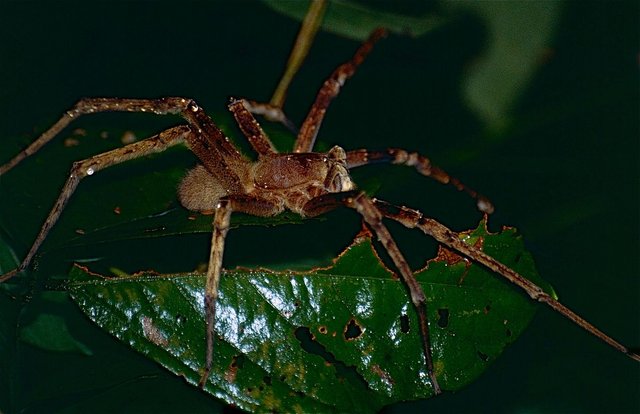
https://pt.wikipedia.org/wiki/Phoneutria_fera
As far as I know, the largest land invertebrate ever, was Arthropleura. Arthropleura is an extinct relative of modern centipedes and millipedes. This creature grew up to 8.5 feet in length and existed during the carbiniferous period of 359 – 299 million years ago, so you needn’t work about finding one lurking in the shed waiting to eat your feet. During this period of earth’s history, a higher proportion of oxygen was present in the atmosphere than in our modern earth’s atmosphere, so it was possible for much larger arthropods, such as Arthropleura and the lovely Pulmonoscorpius (a scorpion which grew up to 28 inches long), to thrive.
The largest Myriapods (the group of Arthropods which includes millipedes & centipedes) in current existance are found in tropical regions. The Amazonian Giant Centipede (Scolopendra Gigantea) can exceed 12 inches in length and is found in South America and the Carribean, although you wouldn’t catch me looking for one. This carniverous bad boy has a venomous bite and can eat birds, mice, lizards an even tarantulas – yum!
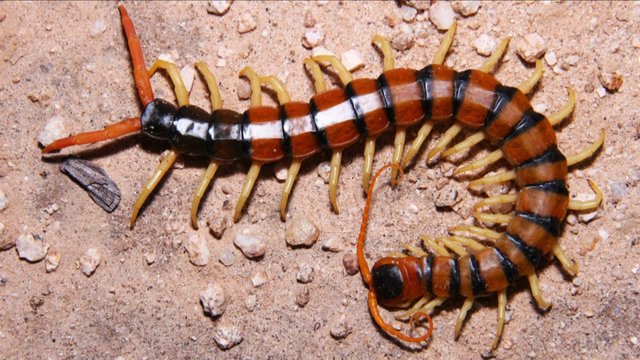
https://www.youtube.com/watch?v=GJcmKBF0Eyc
The giant of the millipede family is the 256 legged Giant African Millipede (Archispirostreptus gigas). Which can grow to over 15 inches in length.
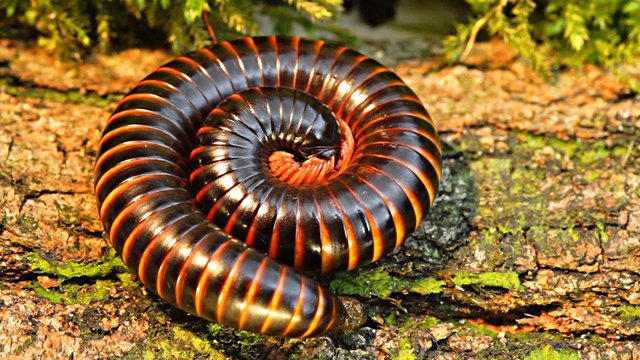
https://www.youtube.com/watch?v=TTDJQBFC_1U
If I had to choose which of these 2 myriapods I would rather share a room with it would definitely be the millipede. These creatures are vegetarian and often kept as a pet.

This is kind of stuff my kids are obsessed with!
Very informative. Apparently I had a bad experience with a jellyfish one summer. Though it's so nice and fun to look at when they are in the ocean but when they touched your skin which happened to me, It was so itchy and it ruined my summer vacation. Lesson learned - stay away from them.
Have a good one. Cheers! :)